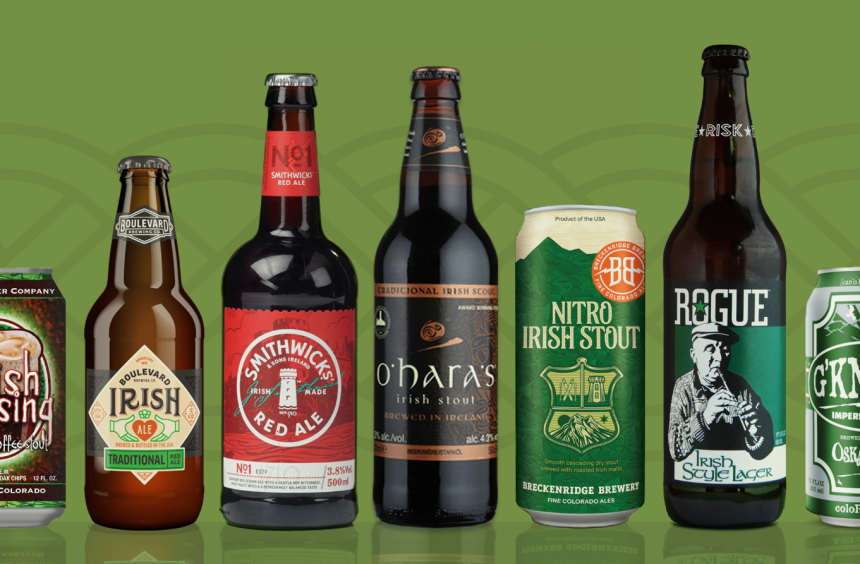Innovation is at the centre of Irish brewing, with a range of microbreweries consistently developing, perfecting, as well as constantly growing a variety of methods and flavours used in the production process.
For those that prefer alternative choices or casual drinkers of beer, craft beer often appears inaccessible which is mainly contributed to the terms or terminology used, and associations of beverages that are mild in flavour. These combined factors often deter consumers that are new to this craft from finding out about the extensive range of styles and flavours available from premium-quality Irish microbreweries.
However, due to the extensive growth of the craft-brewing scene in Ireland over the past 15 years, breweries with passion, and creativity, and that are highly-skilled have become the front runners with offerings that showcase potential for beers to also be regarded as “on-par” with other types of alcoholic beverages when it comes to the taste experience they can offer to consumers.
Whether seeking bitterness, fruity aromas, sweetness, tartness, or complexity, the aim to find the correct beer involves understanding the differences between each of the beer styles. Here is a short introduction to some of the most popular Irish Craft beers.
– Indian Pale Ale
IPA, which is short for Indian Pale Ale is one of the characteristic beer styles commonly linked with “craft brewing”. Its long-lasting popularity is due to the hop-forward taste often complemented or enhanced by striking fruity flavours. IPA originated in India and was first brewed for the British Infantry to try as a light and refreshing beverage.
– Double Indian Pale Ale
DIPA, short for Double Indian Pale Ale, is a variation of IPA, which is “double” when it comes to ABV or strength, and flavour. This process is made possible by adding more malt, and doubling the amount of hops to the “base”. This results in a much deeper flavour and colour. Double Indian Pale Ale also usually involves a fermentation process that is longer.
– Session Beer
Session Beer derived its name from the “sessionability” of this style of beer. This style is refreshing and light while containing a lower alcohol percentage. Known as the more versatile when it comes to the rest of the craft beer styles, it has been made suitable for many occasions.
– Sours
A “Sour” beer will have a very intentionally sour, tart, or acidic taste. This is a process made possible through the use of yeasts and wild bacteria that can then be combined with a fruit that results in entirely different flavour profiles when compared to a standard or typical beer.
– Imperial Stouts
This is a style of stout or porter that is dark (almost black) and features very deep and rich flavours that range from tart to sweet. The alcohol content is also higher and has a much more intense flavour when compared to regular stouts.
– Unpasteurised Beer
This is a style of beer that has grown in popularity recently and is defined largely by something it isn’t. Pasteurisation involves a type of heat treatment designed to kill bacteria that is present in a beverage such as beer, which helps to extend the shelf-life. Unpasteurised beer is a beverage that is safe to consume, but the shelf-life is much shorter. Many beer enthusiasts enjoy the complex flavours that this style of unpasteurised beer possesses.
– No-Alcohol Or Low Alcohol Beers
In a response to a change in lifestyle and consumer trends, no-alcohol and low-alcohol beers are now widely available for those that enjoy what beer tastes like without having to worry about the negative effects linked to alcohol.
– Wit Beer
Wheat Beer or Witbier is a Belgian-style beer that goes through a brewing process that uses un-malted wheat in proportions that are much larger than barley. This produces a fuller mouthfeel and a hazy colour. These beers are often combined with citrus to achieve a more refreshing beverage.
– New Flavours
Once consumers start becoming familiar with some of the popular Irish craft beer styles, more adventurous people often move on to more quirkier and complex beers. Innovation is the foundation of Irish brewing, with many microbreweries consistently working on developing and growing the methods and flavours that they use in production.
This has paved the way for an increase in limited-edition, seasonal beers over the last few years, and in these smaller-batch brews, the creativity and vibrancy at the foundation of the Irish brewing industry have become very evident.
These are experimental beers that usually include novel strain yeasts that are new to Ireland or sourced in localities of microbreweries. Over and above that, “Coolships” which are open stainless-steel vats where beer is made (made popular in the Lambic tradition) has risen in popularity thanks to their ability to encourage “spontaneous fermentation” which results in highly unique beers with ephemeral flavour profiles.














